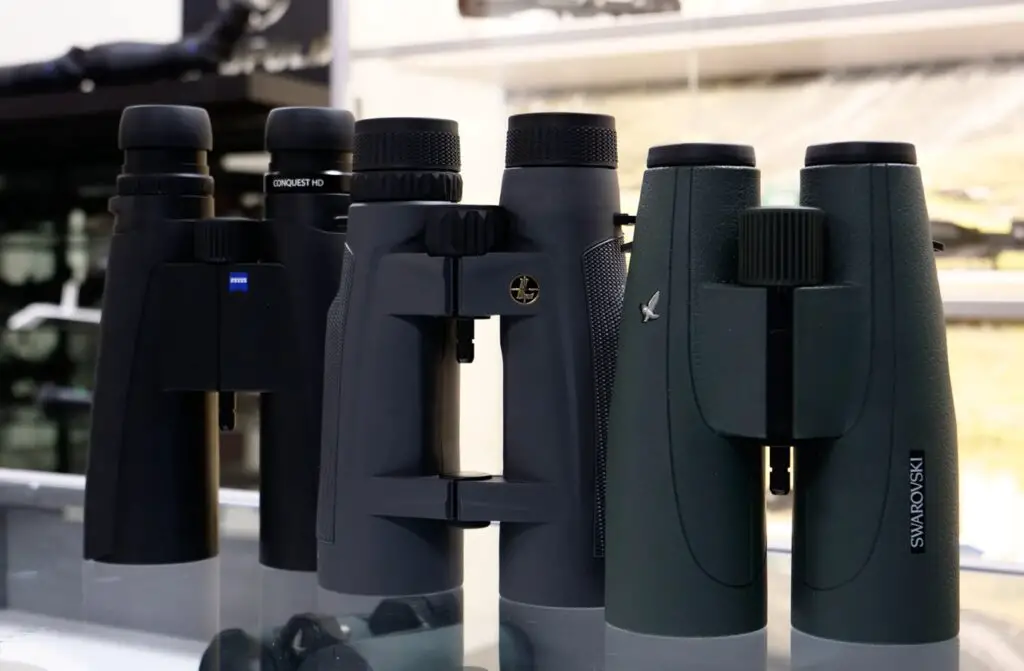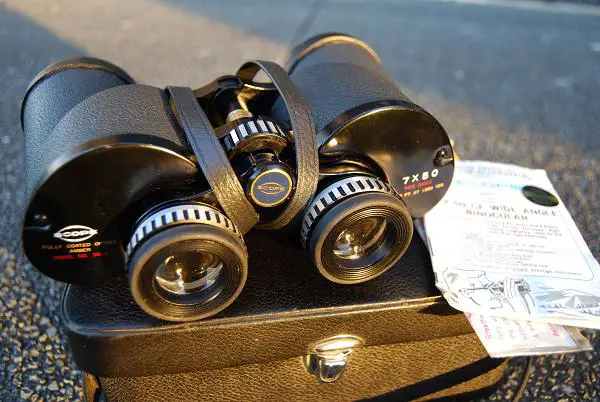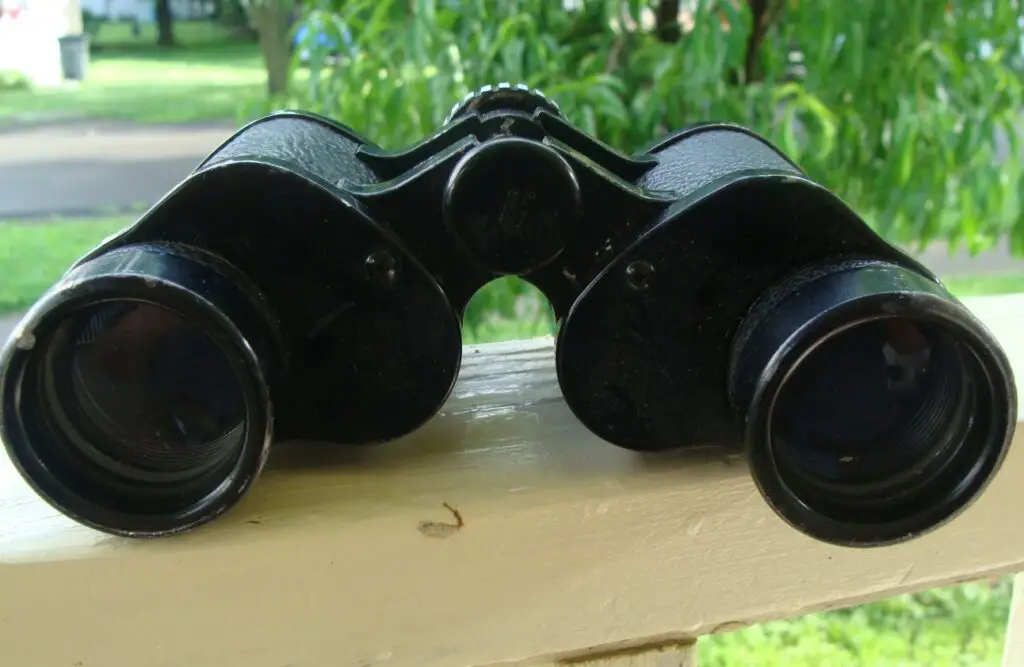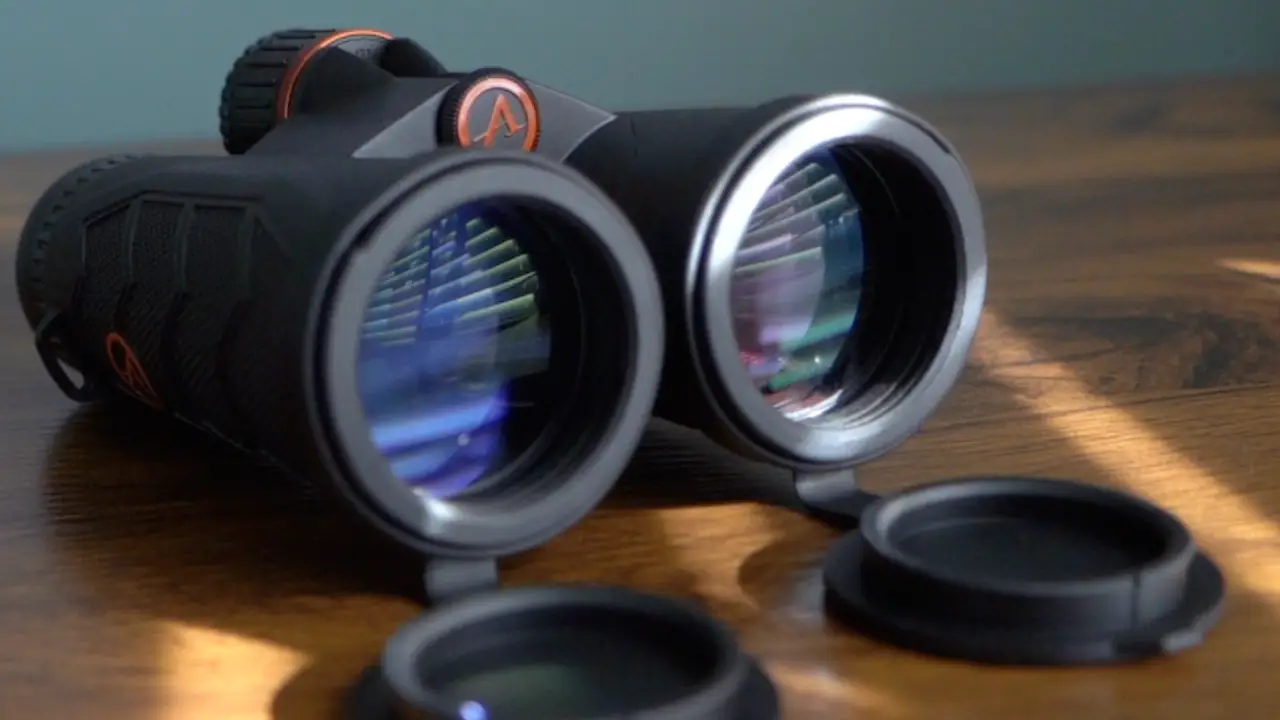Contents
When it comes to observing the world around us, binoculars are invaluable tools that bring distant objects and scenes closer to our eyes. However, not all binoculars are created equal. Binoculars equipped with wide-angle lenses offer a unique set of advantages that make them stand out from their counterparts with narrower fields of view.
Binoculars with wide-angle lenses offer a wider field of view, allowing you to capture more of the scene without moving. They enhance spatial awareness, reduce eye strain, and provide an immersive viewing experience, making them ideal for activities like birdwatching, wildlife observation, and scenic viewing.
Let’s delve into the benefits of binoculars with wide-angle lenses and explore why they are a game-changer for outdoor enthusiasts, nature lovers, and adventure seekers alike.
Expanded Field of View
Field of View:
Field of view refers to the extent of the observable area that can be seen through binoculars. It is the width of the scene or subject that is visible when looking through the lenses. The field of view is measured in degrees and determines how much of the surrounding environment you can observe at once.
Wide Angle Lenses Provide Broader Perspective:
Wide-angle lenses excel in providing a broader perspective compared to standard binoculars.
They achieve this by utilizing a shorter focal length and a wider lens diameter. This design allows more light to enter the binoculars and results in a wider image being projected onto the viewer’s eyes.
Benefits:
The benefits of a wider field of view are manifold.
- First and foremost, it allows you to capture a larger area without the need for constant movement or panning. This is especially valuable in activities such as birdwatching or wildlife observation, where subjects may move quickly or be spread out across a wide area.
- With wide-angle lenses, you can keep a larger portion of the scene in focus, reducing the chance of missing any exciting moments or interesting details.
- The ability to capture more of the environment also enhances the overall viewing experience, providing a sense of immersion and a deeper connection with the surroundings.
Additionally, a wider field of view can aid in locating specific objects or points of interest more efficiently, as you have a broader visual context to work with.

Enhanced Spatial Awareness
Importance of Spatial Awareness:
Spatial awareness plays a crucial role in a wide range of activities. Whether you’re navigating unfamiliar terrain, exploring nature trails, or participating in outdoor sports, having a good sense of spatial awareness helps you understand your surroundings, anticipate obstacles, and make informed decisions. It allows you to perceive the relationships between objects, distances, and dimensions accurately.
Wide-angle Binoculars Aid in Perceiving Spatial Relationships
Wide-angle binoculars greatly aid in perceiving spatial relationships. By providing a broader view, they offer a more comprehensive understanding of the environment.
With a wider field of view, you can see not only the subject of interest but also the surrounding context. This allows for better judgment of distances, depths, and proportions. The wider perspective provided by wide-angle lenses helps you grasp the spatial layout of the scene, making it easier to identify landmarks, paths, or potential hazards.
Activities Where Wide-angle Lenses are Advantageous:
Wide-angle lenses are particularly advantageous in activities such as hiking, mountaineering, and trail exploration. They enable you to have a clearer sense of the terrain, identifying paths, obstacles, and potential dangers more effectively.
For birdwatchers, wide-angle binoculars allow for a better understanding of bird behavior within their ecological context, as you can observe their movements and interactions with the broader environment. In outdoor sports, such as golf or archery, wide-angle binoculars assist in assessing distances accurately and analyzing the spatial arrangement of targets or course elements.
Reduced Eye Strain and Comfort
Eye Relief:
Eye relief refers to the distance between the eyepiece lens of the binoculars and your eyes when you’re viewing through them. It plays a crucial role in comfortable viewing, especially for individuals who wear glasses. Sufficient eye relief ensures that you can position your eyes at a comfortable distance from the eyepieces without experiencing any strain or discomfort.
Comparison Between Narrow and Wide-angle Binoculars:
When comparing narrow and wide-angle binoculars, wide-angle lenses tend to offer better eye relief, resulting in reduced eye strain.
Narrow-angle binoculars often require you to press your eyes closer to the eyepieces to achieve a full field of view.
This can lead to discomfort, particularly during extended periods of use. In contrast, wide-angle binoculars provide more generous eye relief, allowing you to maintain a relaxed viewing position without the need to squint or strain.
Benefits:
The benefits of reduced eye strain and increased comfort are particularly significant for glasses wearers. Wide-angle binoculars accommodate the space required for glasses, enabling you to maintain a comfortable viewing experience without the need to remove or adjust your eyewear.
This ensures that individuals with vision correction can fully enjoy the enhanced field of view and immersive experience provided by wide-angle lenses, without sacrificing visual clarity or comfort.

Immersive Viewing Experience
Sense of Immersion:
Wide-angle binoculars offer an immersive viewing experience that transports you into the heart of the scene. The wider field of view provided by these lenses creates a sense of being fully enveloped in the environment you’re observing. It enhances the feeling of presence and allows you to appreciate the scene in its entirety, immersing yourself in the details, colors, and textures that unfold before your eyes.
Activities Where an Immersive Experience is Desirable:
An immersive experience is particularly desirable in activities where you want to connect deeply with your surroundings and fully engage with the moment.
For example, nature enthusiasts can use wide-angle binoculars to immerse themselves in the grandeur of a sweeping landscape, marveling at the vastness of mountains, forests, or seascapes. Astronomers and stargazers can enjoy the immersive experience of observing a starry night sky, where every constellation and celestial object comes alive with unparalleled clarity.
Additionally, attending live events such as concerts, sporting events, or theater performances can be enhanced by the immersive view provided by wide-angle lenses, allowing you to feel part of the action even from a distance.
Wide-angle Lenses Enhance Enjoyment and Appreciation:
Wide-angle lenses enhance the enjoyment and appreciation of the scene by capturing a larger portion of the environment.
The expanded field of view enables you to take in more details, textures, and colors, revealing the intricacies and beauty of the scene.
Whether it’s the feathers of a bird in flight, the delicate petals of a flower, or the sweeping vistas of a national park, wide-angle binoculars allow you to fully immerse yourself in the visual richness of the moment.
This heightened level of engagement enhances your overall experience, fostering a deeper connection with nature, culture, and the world around you.
Easier Tracking of Moving Subjects
Challenges of Tracking Fast-moving Subjects:
Tracking fast-moving subjects can be challenging with standard binoculars that have narrower fields of view. These binoculars often require constant adjustment and repositioning to keep up with the subject’s movement.
This can lead to missed moments or a disjointed viewing experience as you struggle to maintain focus on the subject.
Wide-angle Lenses Facilitate Easier Tracking:
Wide-angle lenses offer a solution to this challenge by providing a larger tracking window.
With their wider field of view, wide-angle binoculars allow you to effortlessly follow the trajectory of fast-moving subjects.
Whether it’s a soaring bird, a running animal, or athletes in action, wide-angle lenses enable you to keep the subject within your view without the need for constant readjustment. This makes tracking smoother, more seamless, and enhances your ability to capture dynamic moments with precision.
Practical Applications in Wildlife Observation and Sports Events:
The practical applications of easier subject tracking are particularly valuable in wildlife observation and sports events.
- In wildlife observation, where animals can move swiftly and unpredictably, wide-angle binoculars enable you to keep pace with their movements.
- You can follow birds in flight, track the graceful movements of predators or observe the energetic behavior of playful mammals.
- In sports events, wide-angle binoculars allow you to stay engaged with the action, whether it’s capturing the intense moments of a soccer match, following a tennis ball’s trajectory, or closely observing the speed and agility of athletes.
The ability to track moving subjects effortlessly enhances your overall viewing experience, enabling you to capture the excitement and intricacies of the moment.

Versatility
Wide-angle binoculars are highly versatile instruments that cater to a wide range of activities and scenarios. Their unique features and benefits make them suitable for various purposes, ensuring that they can adapt to different needs and preferences.
Examples:
Wide-angle binoculars excel in activities such as birdwatching, nature observation, and outdoor exploration.
Their expanded field of view allows you to capture the intricate details of birds in flight, observe the behavior of wildlife in their natural habitats, and immerse yourself in the beauty of expansive landscapes.
They also prove valuable in stargazing, providing a wider view of the night sky and allowing you to explore constellations and celestial objects with greater ease.
Additionally, wide-angle binoculars are ideal for sports enthusiasts who want to enjoy live events from a distance, as they offer a larger perspective, enabling you to follow the action and appreciate the finer details of the game.
Importance:
When selecting binoculars, it’s essential to consider your specific needs and preferences. The versatility of wide-angle binoculars means they can accommodate different interests and activities, but it’s important to evaluate factors such as magnification power, lens quality, and durability to ensure they align with your specific requirements.
Consider the environments in which you’ll be using the binoculars, the subjects you intend to observe, and any specific features that may enhance your experience, such as waterproofing or image stabilization. By considering these factors, you can select wide-angle binoculars that are tailored to your needs, ensuring the best possible viewing experience across a range of activities and scenarios.
Benefits of Using Binoculars with Wide-angle Lenses: Summary
Expanded Field of View: Wide-angle lenses provide a broader field of view, allowing you to capture a larger area without the need for constant movement or panning. This enhanced perspective enables you to take in more details, observe the surrounding context, and better appreciate the overall scene.
Enhanced Spatial Awareness: Wide-angle binoculars improve spatial awareness by allowing you to perceive the relationships between objects, distances, and dimensions accurately. The wider field of view helps you understand the spatial layout of the environment, identify landmarks, paths, and potential hazards more easily, and make informed decisions.
Immersive Viewing Experience: With wide-angle binoculars, you can experience a heightened sense of immersion. The expanded field of view transports you into the heart of the scene, making you feel more connected to your surroundings. This immersive experience allows for a more engaging and captivating observation, whether it’s nature, sports, or other outdoor activities.
Easier Tracking of Moving Subjects: Wide-angle lenses facilitate smoother and more effortless tracking of fast-moving subjects. The wider field of view allows you to keep up with the movement without constantly adjusting the binoculars. This benefit is particularly valuable in wildlife observation, sports events, and other activities where quick and accurate tracking is essential.
Reduced Eye Strain and Comfort: Wide-angle binoculars often offer better eye relief, providing a more comfortable viewing experience, especially for individuals who wear glasses. The increased eye relief allows you to maintain a relaxed viewing position without straining your eyes, even during extended periods of use.
Versatility: Wide-angle binoculars are versatile instruments that cater to a variety of activities. Whether you’re birdwatching, stargazing, attending sports events, or exploring nature, wide-angle lenses adapt to different scenarios, providing a versatile tool for various interests and hobbies.
Improved Appreciation of Details: The wider field of view offered by wide-angle binoculars enables you to capture more details within the scene. Whether it’s the intricate patterns on a bird’s feathers, the subtle colors of a flower, or the intricate movements of athletes, wide-angle lenses enhance your ability to appreciate and capture the finer details of the subject.
Suitable for Glasses Wearers: Wide-angle binoculars accommodate glasses wearers more comfortably. The generous eye relief allows individuals to maintain a comfortable viewing position without the need to remove or adjust their glasses, ensuring a seamless and enjoyable observation experience.
Tips for Using Wide-Angle Binoculars
Here are some tips to consider when using binoculars with wide-angle lenses:
Adjust the interpupillary distance: Wide-angle binoculars often have adjustable eyepieces to accommodate different users. Ensure that the distance between the eyepieces matches the distance between your eyes for a comfortable and clear view.
Stabilize your view: Holding binoculars steady can be challenging, especially when using higher magnifications. Consider using a tripod or a monopod for added stability, particularly during prolonged observations or when tracking moving subjects.
Practice panning and tracking: Wide-angle lenses make it easier to track moving subjects, but it still requires practice. Try panning smoothly and following the subject’s movement to keep it within your field of view. This skill improves with experience and leads to better results.
Use the diopter adjustment: Many binoculars have a diopter adjustment knob or ring, which allows you to fine-tune the focus for each eye individually. Adjusting the diopter ensures a crisp and sharp image, especially if you have different visual acuity in each eye.
Explore different settings: Wide-angle binoculars often have adjustable settings, such as magnification and focus. Experiment with different settings to find the right balance for your observations. Higher magnification may be useful for distant subjects, while a wider field of view may be preferred for capturing a larger scene.
Consider the lighting conditions: Lighting plays a crucial role in your viewing experience. In low-light conditions, consider binoculars with larger objective lenses, as they gather more light and provide brighter images. Additionally, adjusting the eyecup or using eyepiece filters can help reduce glare and enhance contrast.
Take breaks and relax your eyes: Extended use of binoculars can strain your eyes. Remember to take regular breaks and focus on distant objects to relax your eyes. It’s also important to stay hydrated and maintain good posture during observations to avoid unnecessary discomfort.
Clean and protect your binoculars: Proper maintenance ensures optimal performance and longevity of your binoculars. Clean the lenses regularly with a lens cleaning solution and a microfiber cloth to remove dirt, smudges, and fingerprints. When not in use, store your binoculars in a protective case to safeguard them from dust, moisture, and accidental damage.
Frequently Asked Questions (FAQ’s)
Q: What is the advantage of wide-angle lenses in binoculars?
A: Wide-angle lenses in binoculars provide a broader field of view, allowing you to see a larger area of the scene without the need for constant movement or panning. This expanded view enhances spatial awareness, improves tracking of moving subjects, and creates a more immersive viewing experience.
Q: How do wide-angle binoculars reduce eye strain?
A: Wide-angle binoculars typically offer better eye relief, which is the distance between the eyepiece and your eyes. This increased eye relief allows you to view through the binoculars comfortably without straining your eyes, even during extended periods of use. It is especially beneficial for individuals who wear glasses.
Q: Are wide-angle binoculars suitable for wildlife observation?
A: Yes, wide-angle binoculars are excellent for wildlife observation. They enable you to observe animals in their natural habitats without constantly readjusting the binoculars. The wider field of view allows you to track fast-moving subjects more easily, capture dynamic moments, and appreciate the broader context of the wildlife scene.
Q: Can wide-angle binoculars be used for stargazing?
A: Absolutely! Wide-angle binoculars are great for stargazing. With their wider field of view, they provide a larger view of the night sky, allowing you to observe constellations, planets, and other celestial objects with enhanced clarity and context. They offer a more immersive experience and make it easier to navigate the vastness of the night sky.
Q: Are wide-angle binoculars suitable for sports events?
A: Yes, wide-angle binoculars are well-suited for sports events. They allow you to follow the action more smoothly and capture the finer details of the game from a distance. The wider field of view helps you track athletes, observe their movements, and immerse yourself in the excitement of the event.
Q: Are there any disadvantages to wide-angle binoculars?
A: While wide-angle binoculars offer numerous benefits, it’s important to consider that they may be bulkier and heavier than standard binoculars. Additionally, some wide-angle models may have slight distortion at the edges of the field of view. However, advancements in technology have minimized these issues, and the benefits of wide-angle lenses often outweigh any potential drawbacks for most users.
Bottom Line
In conclusion, wide-angle binoculars are the doors to a world of wonder and exploration. They cross barriers, broaden horizons, and reveal a plethora of advantages that improve our life.
These binoculars transform how we discover, value, and interact with our surroundings through their widened fields of view, improved spatial awareness, comfort, and immersive experiences. Grab a pair of binoculars with wide-angle lenses and set off on an astonishing trip of visual magnificence to discover the larger world that is waiting for you.

A Binoculars enthusiast, who love exploring skies and watching birds. It is my hobby to collect Binoculars of different kinds and try to explore the world through various lenses. This is all I do to explore happiness by magnifying my beautiful world.




